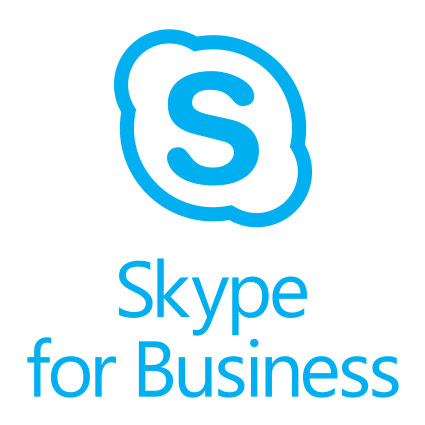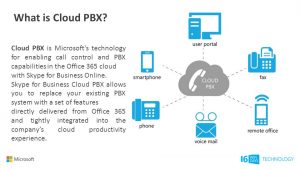Taking Your Business Calls to the Next Level
 In April of 2015, Microsoft officially launched Skype for Business. Microsoft’s instant messaging and conferencing program has become more and more useful over the years, making it easier to do things like share documents, give presentations, and video chat.
In April of 2015, Microsoft officially launched Skype for Business. Microsoft’s instant messaging and conferencing program has become more and more useful over the years, making it easier to do things like share documents, give presentations, and video chat.
One benefit that more companies are using or looking into using is utilizing Skype to replace their business’ existing phone system. Zunesis moved their phone system to Skype last year and has only begun to use some of its functionalities.
How Does it Work?
Skype’s Cloud PBX system does almost everything a regular PBX system does, but it also integrates with Office 365, allowing you to do things like send voicemails as an email, eliminating the need to ever check voicemail again. It does everything a landline does, such as hold and transfer, but it also has many features landlines don’t have.

As part of the Office 356 suite, Skype centralizes all administration in the cloud. This simplifies all administrative tasks, and allows users to make and receive calls anywhere, as long as they have the Skype app running on their laptop or mobile device. No longer do employees need to be tethered to a desk phone during business hours, and in a world of increasing mobility, this is incredibly useful. You don’t even need to get new phone numbers to replace your current system, Skype allows you to port any phone numbers, allowing you to keep your business number. No need for new business cards, or any emails to customers telling them your phone number has changed.
Another perk of using Skype instead of a traditional phone line is the flexible subscriptions. You can add or subtract users as you go so you never have to pay for more than what you are using. You can set permissions by giving some users the ability to make international calls, while only allowing others to make domestic calls.
Skype integrates VOIP capabilities with instant messaging and conferencing, making it a great communications tool. One can send instant messages, screen share, or make calls all from the same place, using the same contacts. You can dial by name from any office 365 app, or use the traditional dialer in Skype, which is a welcome familiarity for many users. It also comes with 5 licenses per user, so you can make calls from any device.
Some other features include:
 Enterprise calendar call routing: where you can enable or disable call forwarding by using your exchange calendar business hours.
Enterprise calendar call routing: where you can enable or disable call forwarding by using your exchange calendar business hours.
Do-not-disturb routing and call blocking: If you don’t want to be disturbed while you work on a big project, you can easily block calls except from those that you specifically indicate are ok to come through to you.
Device Switching or Transfer a Call to Another Person in your Office: Move from a headset to speakerphone with just a few clicks. Easily transfer calls to other people.
Caller ID, Call Waiting, Call Delegation, Call History and Call Forwarding: All tools available through Skype.
Support: Microsoft offers 24/7 support, so you never have to worry about phone lines going down. Anyone already using Office 365 should definitely be looking to replace their current phone systems with Skype. It offers so much for so little, costing around $8/user, it could end up saving your business money.
Additional Resources on Deployment, Licensing and Features of Skype Business Phone System:
- Set up Calling Plans: This article has step-by-step instructions to get set up with your phone numbers or to transfer your existing phone numbers to Skype for Business.
- Plan your Phone System in Office 365 (Cloud PBX) solution: This TechNet article lays out all of your deployment options. It also has information about planning an entirely cloud-only solution.
- Skype for Business and Microsoft Teams add-on licensing: Learn which licenses you need to buy to get the Phone System in Office 365.
- Set up Phone System voicemail – Admin help
- Discover Skype for Business: Help the people in your company learn how to use Skype for Business features.
As of September 2017, Microsoft announced that Microsoft Teams will replace Skype for Business and will add more functionality. The transition will occur over the next three years and Zunesis will keep you updated as further announcements are made.
If you are interested in learning more about using Skype for Business for your phone system, contact Zunesis for more information on how we can set up your company with licenses.
Categories
Search
Blog Categories
Related Resources
Archives
- July 2024
- June 2024
- May 2024
- April 2024
- March 2024
- January 2024
- October 2023
- September 2023
- August 2023
- July 2023
- June 2023
- May 2023
- April 2023
- March 2023
- February 2023
- January 2023
- October 2022
- July 2022
- June 2022
- May 2022
- April 2022
- March 2022
- February 2022
- January 2022
- December 2021
- November 2021
- October 2021
- September 2021
- August 2021
- July 2021
- June 2021
- May 2021
- April 2021
- March 2021
- February 2021
- January 2021
- December 2020
- November 2020
- October 2020
- September 2020
- August 2020
- July 2020
- June 2020
- May 2020
- April 2020
- March 2020
- February 2020
- January 2020
- December 2019
- November 2019
- October 2019
- September 2019
- August 2019
- July 2019
- June 2019
- May 2019
- April 2019
- March 2019
- February 2019
- January 2019
- December 2018
- November 2018
- October 2018
- September 2018
- August 2018
- July 2018
- June 2018
- May 2018
- April 2018
- March 2018
- February 2018
- January 2018
- December 2017
- November 2017
- October 2017
- September 2017
- August 2017
- July 2017
- June 2017
- May 2017
- April 2017
- March 2017
- February 2017
- January 2017
- December 2016
- November 2016
- October 2016
- September 2016
- August 2016
- July 2016
- June 2016
- May 2016
- March 2016
- February 2016
- January 2016
- December 2015
- October 2015
- September 2015
- August 2015
- July 2015
- June 2015
- May 2015
- April 2015
- March 2015
- February 2015
- January 2014
- February 2013




